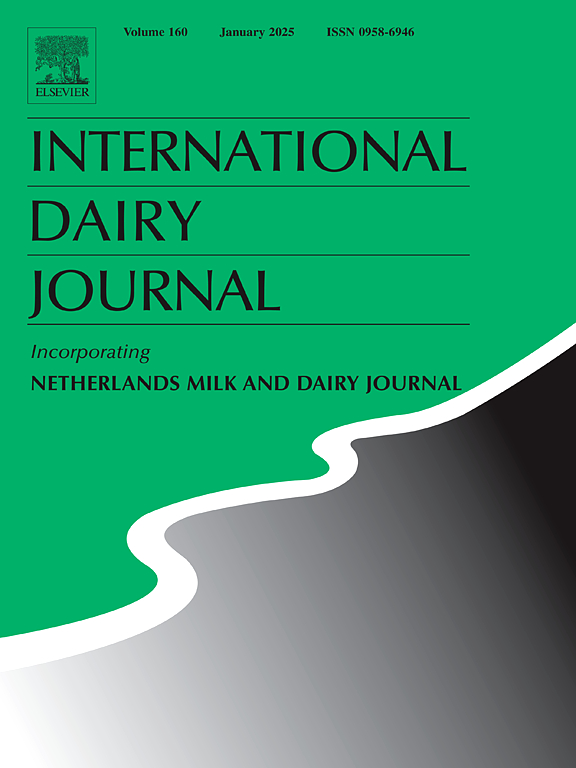Milk Extracellular Vesicles enhance gut barrier function in vitro
IF 3.1
3区 农林科学
Q2 FOOD SCIENCE & TECHNOLOGY
引用次数: 0
Abstract
Milk extracellular vesicles (EVs) are small particles present in milk. This study investigates the potential of bovine milk EVs and their cargo to modulate human gut barrier integrity and permeability using in vitro gut barrier models. Polarized Caco-2 monolayers were exposed to milk EVs, EV phospholipid and protein components (sphingomyelin, phosphatidylethanolamine, xanthine oxidase and cluster of differentiation 9), for 4 h. Milk EVs increased the concentration of tight junction proteins claudin-1 and occludin, while cluster of differentiation 9, xanthine oxidase and sphingomyelin increased junctional adhesion molecule 1, a tight junction protein (P < 0.05). Additionally, a Caco-2 model simulating a newborn gut barrier was utilized, to evaluate the effect of milk EVs on barrier maturity for this life stage. EVs increased barrier integrity and reduced paracellular permeability in this infant model faster than controls (P < 0.05). These findings suggest that milk EVs promote gut barrier health in vitro.
求助全文
约1分钟内获得全文
求助全文
来源期刊

International Dairy Journal
工程技术-食品科技
CiteScore
6.50
自引率
9.70%
发文量
200
审稿时长
49 days
期刊介绍:
The International Dairy Journal publishes significant advancements in dairy science and technology in the form of research articles and critical reviews that are of relevance to the broader international dairy community. Within this scope, research on the science and technology of milk and dairy products and the nutritional and health aspects of dairy foods are included; the journal pays particular attention to applied research and its interface with the dairy industry.
The journal''s coverage includes the following, where directly applicable to dairy science and technology:
• Chemistry and physico-chemical properties of milk constituents
• Microbiology, food safety, enzymology, biotechnology
• Processing and engineering
• Emulsion science, food structure, and texture
• Raw material quality and effect on relevant products
• Flavour and off-flavour development
• Technological functionality and applications of dairy ingredients
• Sensory and consumer sciences
• Nutrition and substantiation of human health implications of milk components or dairy products
International Dairy Journal does not publish papers related to milk production, animal health and other aspects of on-farm milk production unless there is a clear relationship to dairy technology, human health or final product quality.
 求助内容:
求助内容: 应助结果提醒方式:
应助结果提醒方式:


